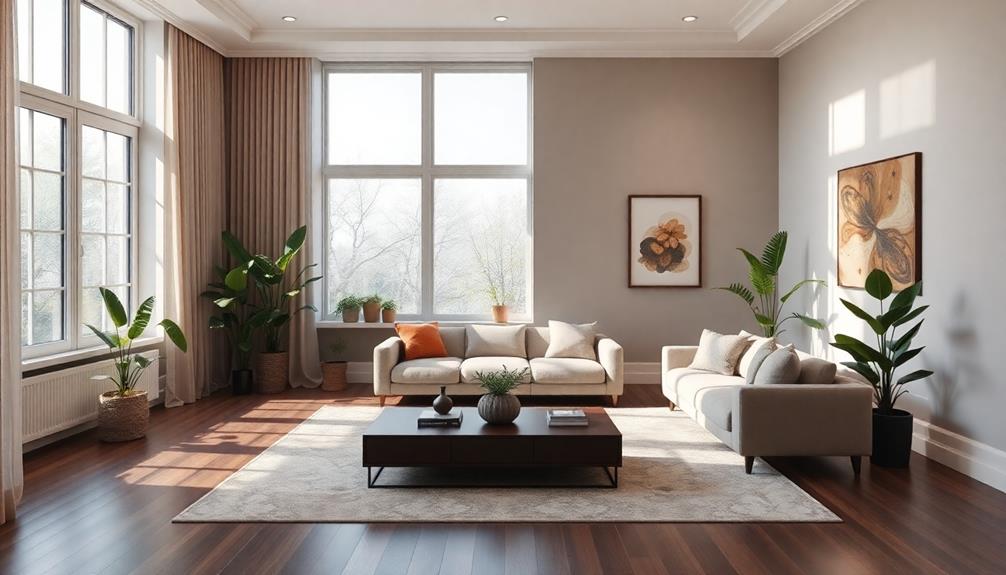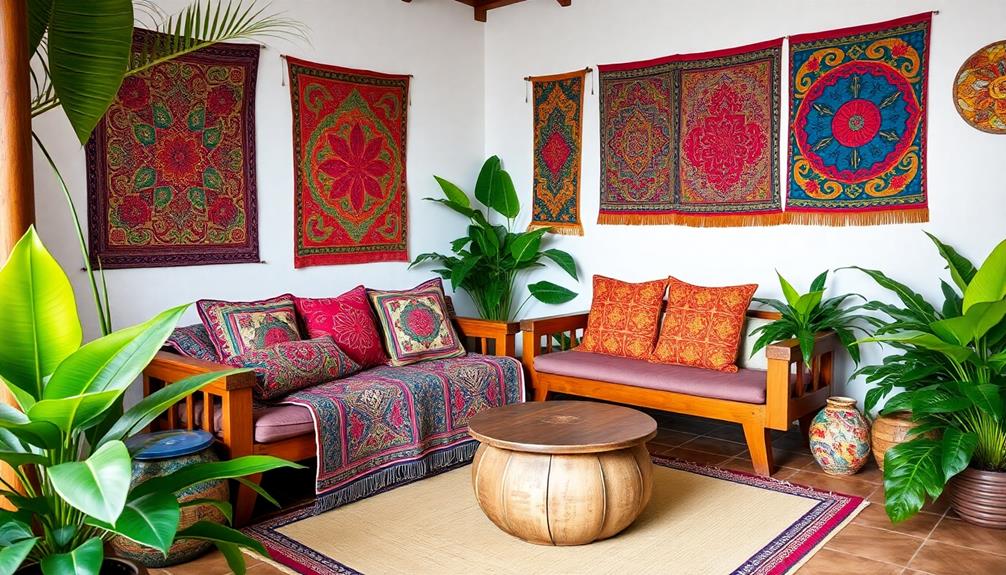Top designers rely on Feng Shui secrets to craft perfect interiors that radiate positive energy. You can enhance your space by optimizing Chi flow—think about the arrangement of furniture to create a commanding position, ensuring you're aware of the entrance. Choose auspicious colors like black and red, and keep your environment clutter-free to prevent stagnant energy. Natural light is your friend, so aim for airy spaces that invite brightness. Don't overlook the power of plants and balance using the five elements. There's a lot more to explore that can help elevate your home's vibe even further.
Key Takeaways
- Utilize the Bagua Map to align your interior design with specific life areas, enhancing overall energy flow.
- Prioritize natural lighting to create a bright, airy atmosphere that promotes positive energy and well-being.
- Incorporate the Five Elements through colors and materials to establish balance and harmony within your space.
- Maintain a clutter-free environment to prevent stagnation of Chi and promote mental clarity and tranquility.
- Arrange furniture in the command position to ensure a sense of control and security in your living spaces.
Foundations of Feng Shui
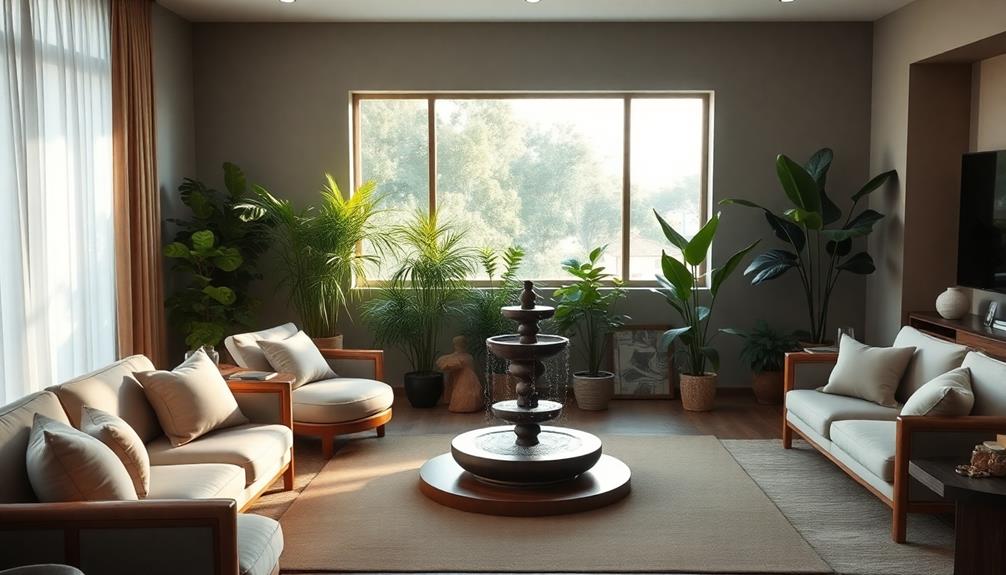
Feng Shui, an ancient Chinese practice, offers you powerful tools to create harmony in your living spaces. At its core, Feng Shui is about optimizing the energy flow, or Chi, within your home. To achieve this, you can use essential tools like the Bagua map. This map helps you identify nine life areas—such as Career and Wealth—allowing you to enhance positive energy where it's needed most.
Incorporating elements of Balinese design can further enhance the tranquility and harmony of your space, as it emphasizes natural materials and open layouts that align with Feng Shui principles. Balancing the five elements—Wood, Fire, Earth, Metal, and Water—is vital in creating a supportive environment. You can incorporate these elements through color, materials, and decor to achieve that balance and harmony.
Additionally, you'll want to take into account the command position in your space. This position guarantees you have a clear view of the entrance, making you feel secure and in control.
When following Feng Shui principles, remember that interior design rules can complement these practices. By integrating these concepts, you promote the flow of Chi, fostering a sense of well-being. Whether you're rearranging furniture or choosing decor, each decision can enhance the positive energy in your home, making it a sanctuary of balance and renewal.
Feng Shui Dos and Don'ts
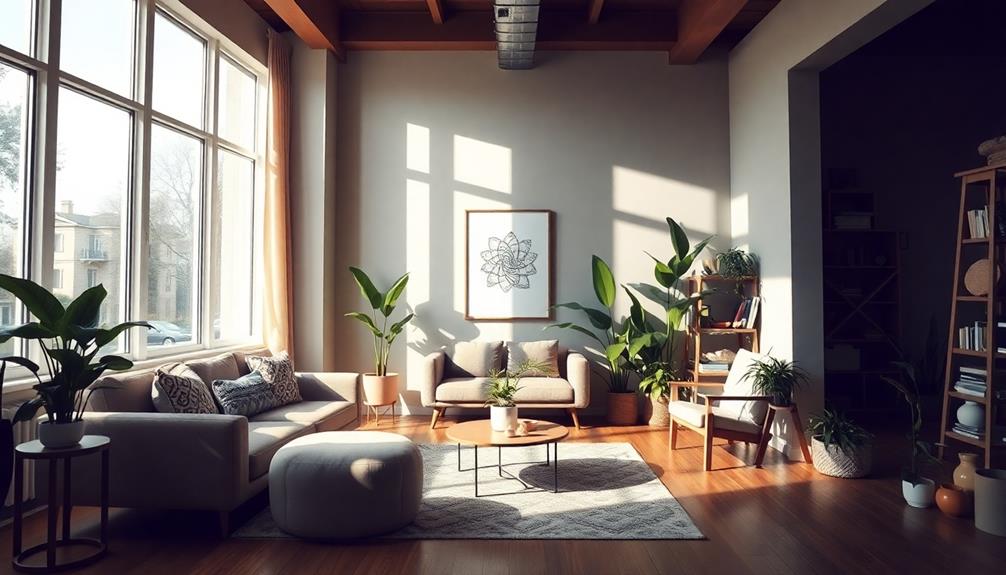
When it comes to creating a harmonious living space, knowing the dos and don'ts of Feng Shui can make all the difference. To enhance the positive energy in your home, incorporate auspicious colors like Black, Blue, Green, and Red. These colors promote a vibrant flow of energy throughout your space, much like the vibrant colors and intricate patterns found in Indonesian decorative pillows.
Make it a priority to avoid clutter at all costs, as it obstructs the flow of Chi and creates stagnation. Ensure that broken objects are kept out of sight, since they symbolize broken energy and can disrupt the harmony of your environment.
When it comes to lighting, opt for softer, natural light instead of harsh lighting to cultivate a calming atmosphere that promotes relaxation. Additionally, place your furniture in the command position, allowing you to see the entrance while seated, which fosters a sense of control and security.
Be cautious with mirrors—they can create negative energy by causing disorientation and reflecting unwanted aspects of your space. By following these Feng Shui dos and don'ts, you'll create a balanced and inviting environment that supports well-being and positive energy flow.
Feng Shui in Specific Spaces
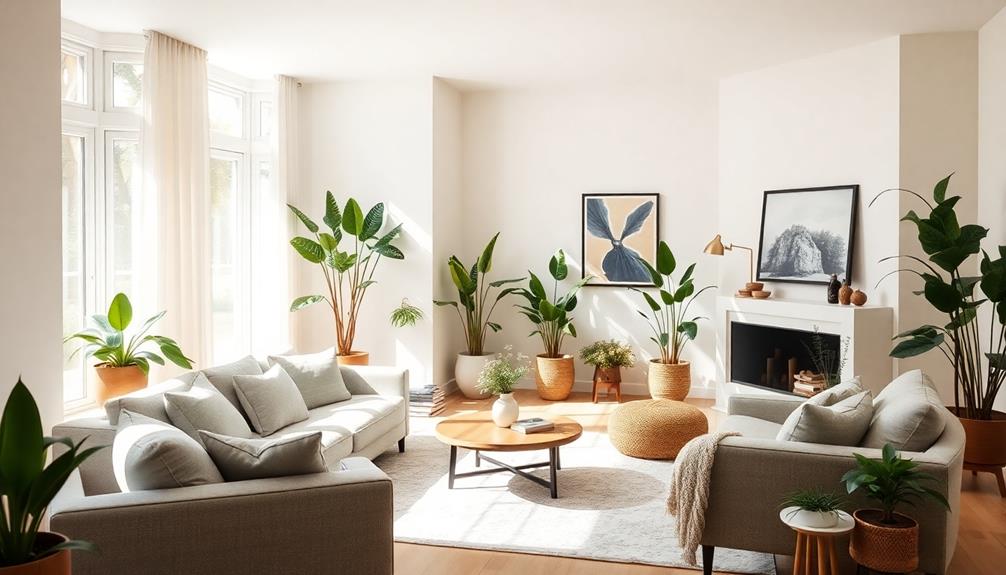
Creating harmonious interiors goes beyond general principles; it involves applying Feng Shui techniques tailored to specific spaces in your home.
In the living room, arrange your furniture to maximize light exposure and encourage interaction, while also considering elements of Traditional Indonesian Style Home Decor that emphasize natural materials. Incorporate plants like aloe vera and bamboo to enhance positive energy flow and purify the air.
In the kitchen, keep the stove clean and centrally located to symbolize nourishment, and maintain a tidy sink to promote cleansing energy. Stock your fridge to represent family care, reinforcing the energy in your home.
For the bedroom, place your bed in a commanding position, ensuring it has a supportive headboard and enough space around it for ease of movement. This arrangement fosters restful energy.
When designing your work space, consider the flow of energy; position your desk to face the door while ensuring it's not directly in line with it.
Lastly, use the Bagua map to guide your decor pieces in each space. Align specific elements and colors with corresponding life areas, such as career, love, and wealth, to enhance the overall energy flow throughout your home.
Common Feng Shui Mistakes
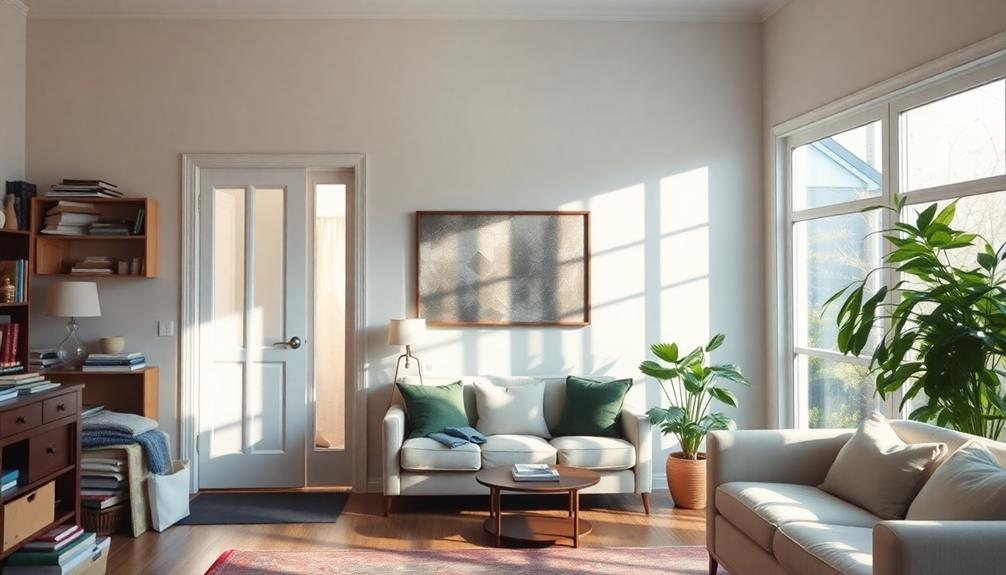
Many people unknowingly make common Feng Shui mistakes that can disrupt the flow of energy in their homes. One significant error is using too many colors in a space, which creates chaos and hinders a cohesive color palette. Sticking to a more harmonious selection allows positive energy to flourish, similar to how Mahallati Interiors utilizes high-quality materials sourced locally to create serene spaces.
Furniture placement is another area where mistakes often occur. Placing furniture too close to walls can obstruct energy flow. By leaving space around your furniture, you invite Chi to circulate freely.
Additionally, excessive clutter is a major no-no in Feng Shui. It obstructs positive energy and creates stagnation, so regular decluttering is essential for maintaining harmony.
Mirror placement can also be tricky. Positioning mirrors to face the front door or reflecting clutter distorts energy and can lead to disorientation. Instead, mirrors should reflect light and positive views only.
Finally, don't overlook the importance of natural light. Neglecting to maximize its exposure can lead to a lack of energy liveliness in your home, diminishing overall ambiance and Chi flow.
General Feng Shui Principles
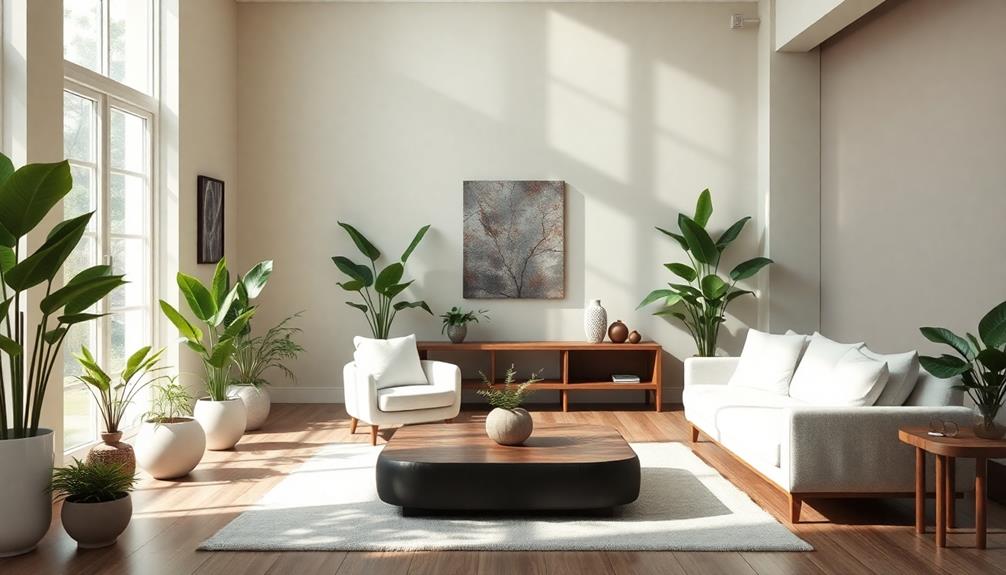
Understanding Feng Shui principles is imperative for cultivating a harmonious living space. By applying these principles, you can enhance positive energy and create a balanced environment. Start by maintaining a clutter-free space, as clutter disrupts the flow of Chi and can lead to mental chaos. Integrating the five elements—wood, fire, earth, metal, and water—into your design choices creates a dynamic and supportive atmosphere.
Utilizing natural light and ensuring proper ventilation are essential as bright, airy spaces promote liveliness. The Bagua map helps you link different areas of your home to various life aspects, guiding you in selecting colors and elements that enhance energy.
Here's a quick reference to key Feng Shui principles:
| Principle | Description | Benefits |
|---|---|---|
| Clutter-Free Space | Removes obstacles to Chi flow | Promotes clarity and calm |
| Five Elements | Incorporates nature into design | Enhances balance and harmony |
| Natural Light | Maximizes brightness and airflow | Boosts positive energy |
| Furniture Arrangement | Encourages open pathways and communication | Reduces negative energy |
| Avoid Sharp Corners | Softens the space and promotes comfort | Creates a soothing environment |
Frequently Asked Questions
What Is the Feng Shui Theory in Interior Design?
Feng Shui theory in interior design focuses on arranging furniture and decor to enhance Chi flow. It emphasizes decluttering, natural light, and incorporating the five elements to create harmonious, vibrant spaces that promote well-being and balance.
What Is Bad Feng Shui for a House?
Bad Feng Shui in your house includes clutter that blocks energy flow, sharp corners creating discomfort, broken items symbolizing negativity, harsh lighting increasing stress, and mirrors facing the front door repelling positive energy.
What Colors Should Be Avoided in Feng Shui?
Daringly dark colors like black and deep blue can dampen your spirits, while harsh hues like bright red and orange overwhelm relaxation. Stick to soothing shades to create a serene space that nurtures harmony and happiness.
What Are the 5 Principles of Feng Shui?
The five principles of Feng Shui focus on balancing Wood, Fire, Earth, Metal, and Water. Each element represents unique qualities. By harmonizing these, you can create a more inviting and balanced environment in your space.
Conclusion
By blending the calming flow of Feng Shui with your unique style, you create a sanctuary that nurtures both spirit and design. Imagine a room where vibrant colors dance with soothing textures, and natural light kisses every corner. As you embrace these principles, you'll transform cluttered chaos into harmonious serenity. Let each choice, from furniture placement to decor, reflect not just beauty but balance, turning your space into a reflection of peace amidst the whirlwind of life.
